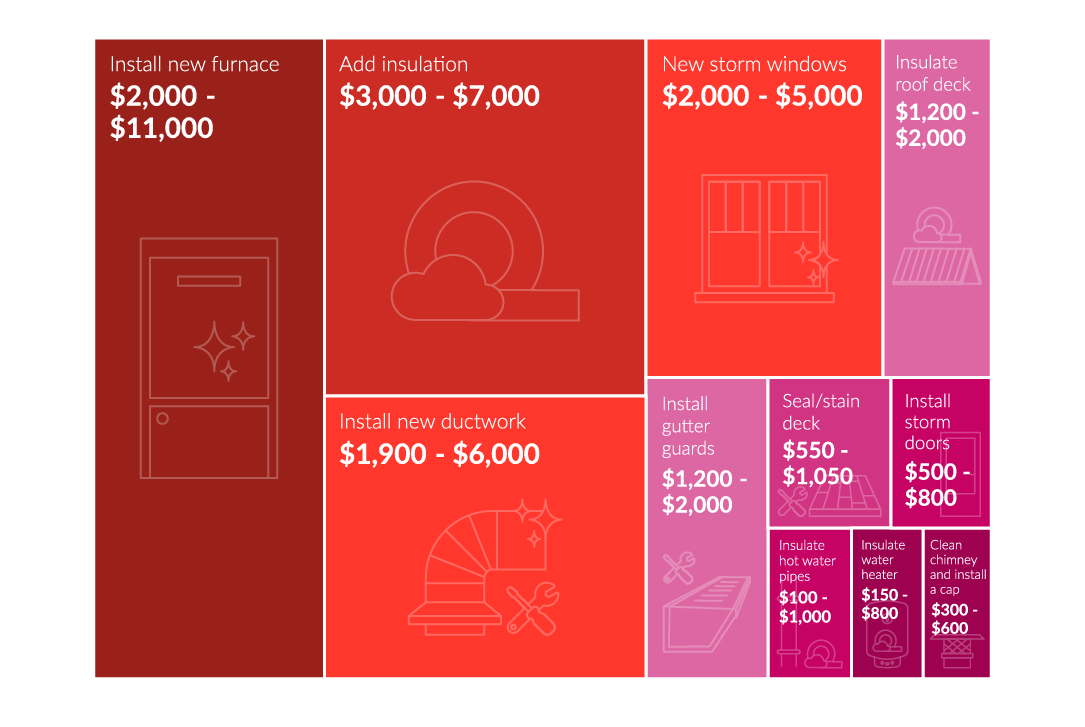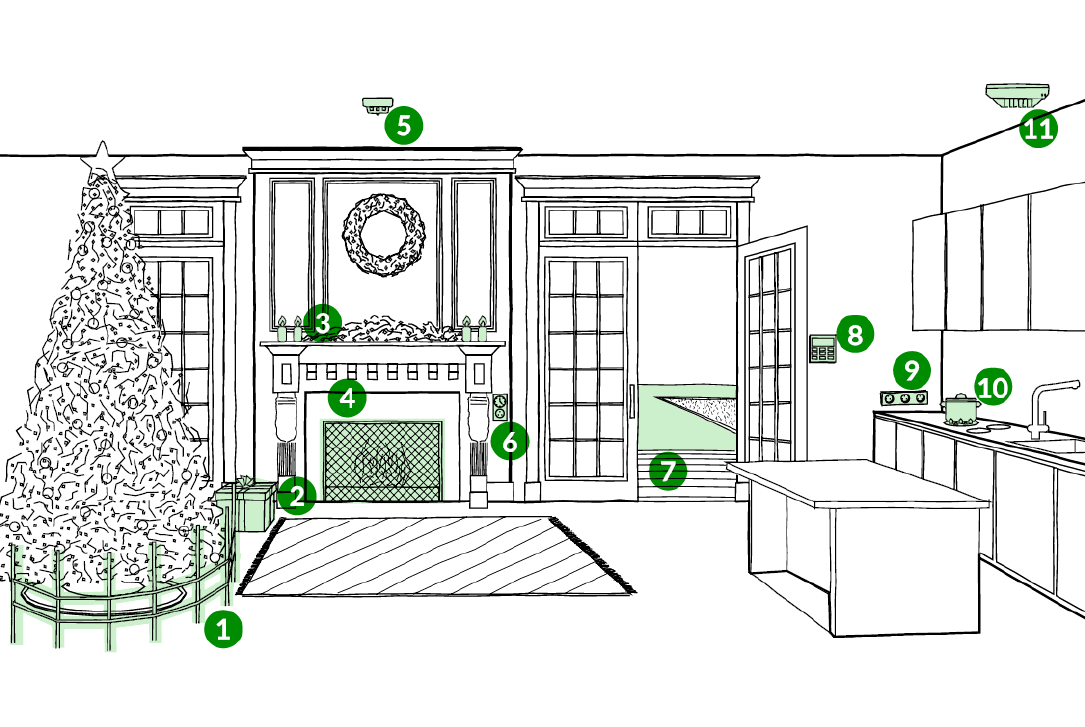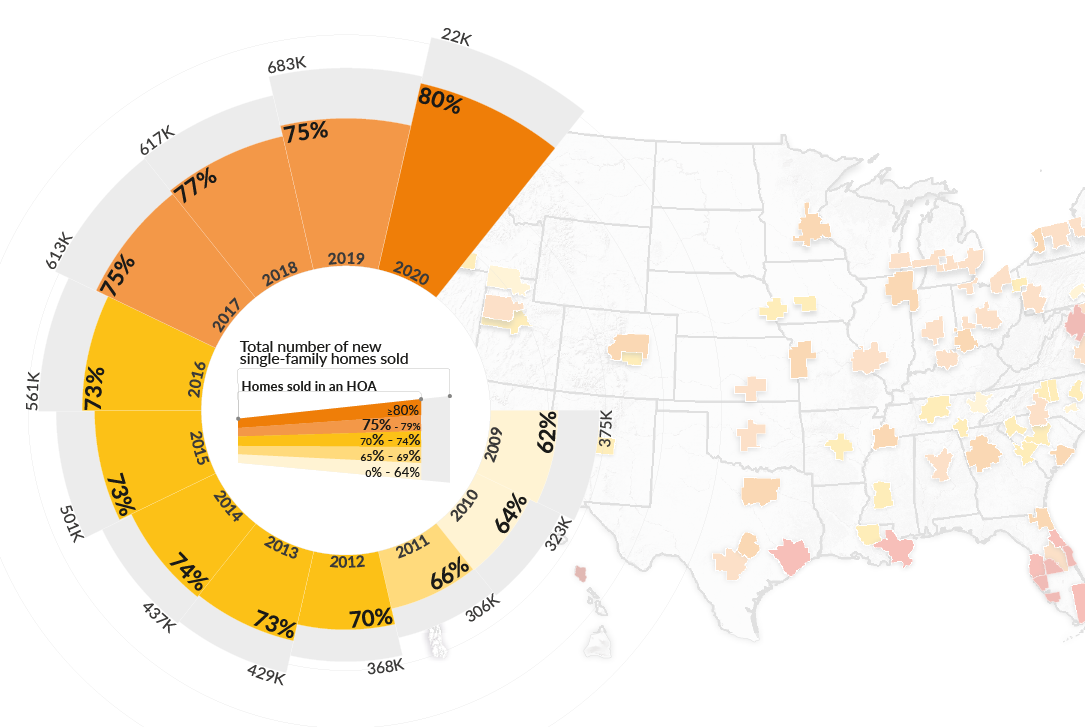Between the years 2019 and 2020, residential construction spending saw its biggest increase over the previous 15 years according to data taken from the Census. Like many industries, residential construction has faced numerous challenges during this time that may have contributed to this spending increase. The pandemic, the huge demand that followed, combined with labor shortages and material price increases, are among the reasons which have led to previously unseen levels of industry spending growth.
In this article we explore this data and some of the potential reasons behind it. We have also interviewed top experts, who are at the forefront of the industry, to give us key insights as to what are the main reasons behind the rise in residential construction spending and with the information we have so far, what we can expect from 2021 and moving forward.
The Biggest Increase in Residential Construction Spending in Over 10 Years

The graphic above gives an overview breakdown of the spending on residential construction over the last 10 years. The size of each house illustration, along with the costs listed inside, indicate the total spending each year. The vertical bars above indicate the increase or decrease from the previous year.
As you can see, 2020 saw the biggest increase in spending above all other years shown, with $82.3B more spent than the previous year, with a total of $629B of private residential construction spending. Before this, it’s interesting to note that 2018 showed significantly less of an increase in the total amount year to year when compared to the few years prior, and that 2019 showed an actual decrease in total spending. This means that 2020’s increase is not only the biggest in 10 years, it is also a major reversal of the trend in decreased spending that had been shown in the two years previous.
Taking a look at 2021; spending as of August ($507B) doesn’t show signs of slowing, with over $100B more spent compared to this time last year.
Understanding the Reasons Behind This Increase
There are several potential reasons for this most recent increase in 2020, which make it such an outlier in comparison to the previous years. As Jing Fu, Director of Forecasting & Analysis at the National Association of Homebuilders highlights, the issues at play are often intertwined:
“Besides solid demand and rising building material prices, extended/longer deliver times and the construction labor shortage also contributed to increases in construction spending in the past two years and are expected to persist as the overall labor market recovers.”
We’ll explore some of these reasons in more detail and the impact that they may have had in the following sections.
Great Demand for New Housing
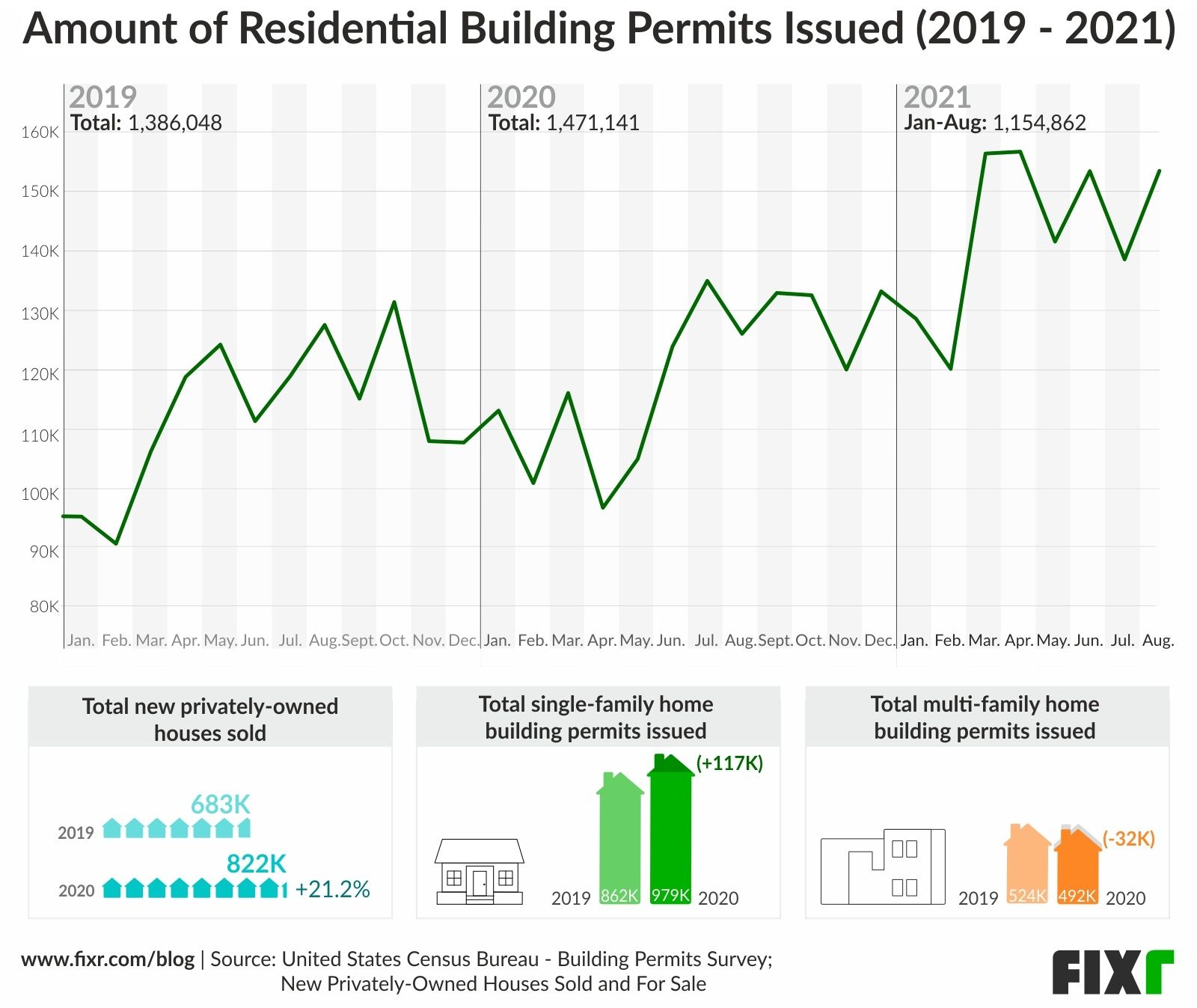
One main reason for the increased spending is an increase in demand. While demand in and of itself can be difficult to track, it can be represented by several indicators, with the number of permits pulled during a specific time period being one of them. Because permits are required in most areas for major construction of any kind, an increase in permits generally indicates an increase in industry demand.
As you can see from the graphic above, which shows the monthly and annual building permits issued (Building Permits - not seasonally adjusted), there is a clear increase from 2019 to 2020, with 2021 showing relatively high numbers so far.
As Fu at NAHB points out, “The housing market depends ultimately on supply and demand.” Demand could also be considered by looking at the amount of houses sold. When analyzing this demand between 2019 and 2020, Fu states,
“On the demand side, 683,000 new homes were sold in 2019 and 822,000 new homes were sold in 2020, 21.1% higher than 2019. It was the highest annual growth rate since 1983. Robust demand for housing, supported by low mortgage rates, has driven residential construction spending up.”
Adam Mopsick, CEO and Co-Founder of Amicon, draws similar conclusions by saying,
“...the demand for new homes has never been higher. Due to this low inventory, buyers are willing to pay higher prices for homes, projects, and renovation. People are also willing to accept these higher prices because interest rates are so low.”
Building Material Prices Have Set New Records
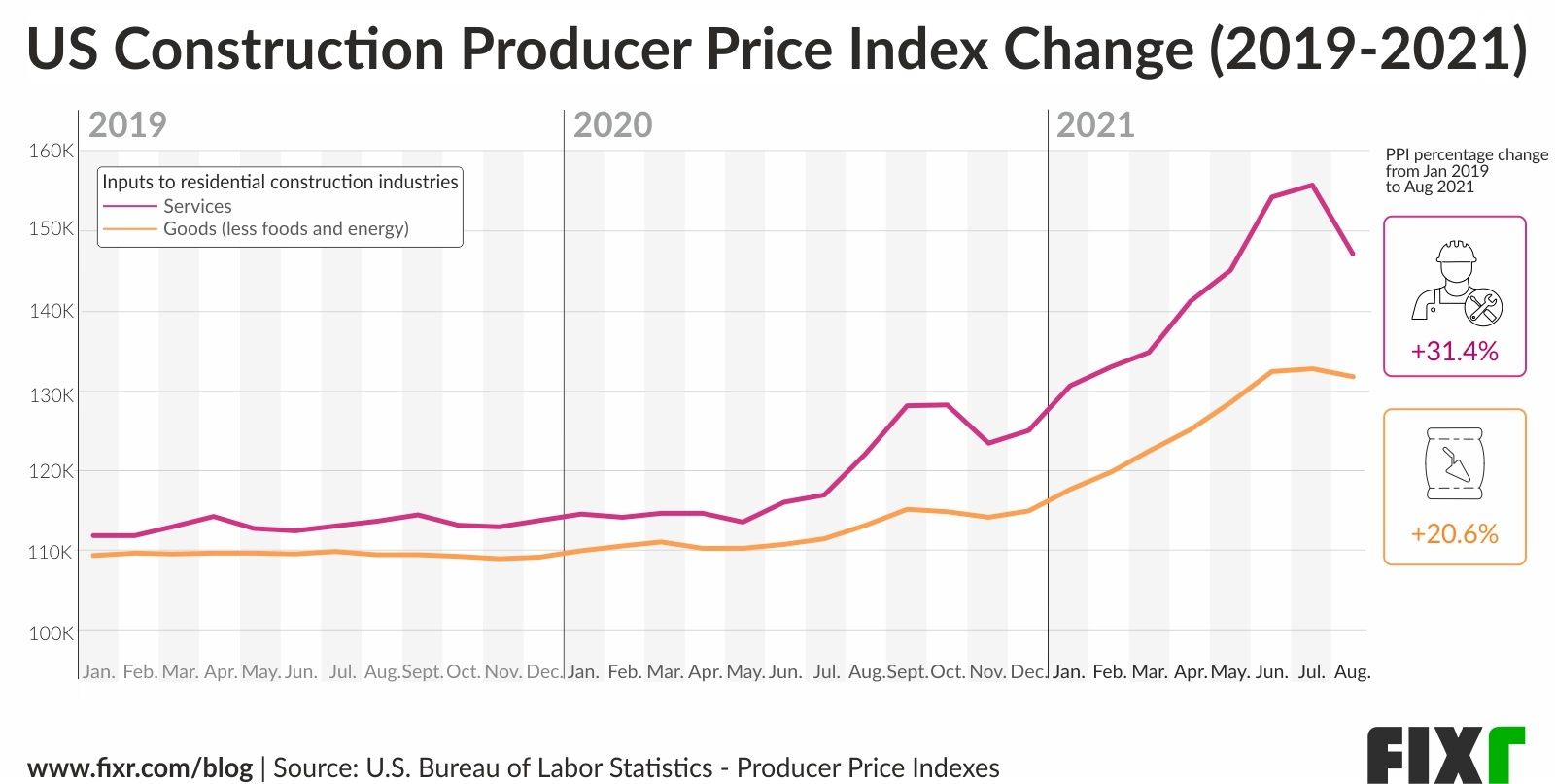
Another reason for the total cost of construction spending to have climbed so much in 2020 is the cost of goods and services. Materials such as lumber, drywall, glass, sheet metal, and other construction staples all increased in 2020 and kept rising as we moved into 2021. This is a direct tie to demand; when the demand increased at the start of 2020, suppliers were unprepared, and it caused a sudden skyrocketing of overall costs.
The above graphic tracks the PPI from 2019 until August 2021. The PPI, an index that depicts the average change over time in the selling prices received by producers for their output, is a helpful representation for the variations in the cost of materials. As we can see from the graphic, there has been a definite increase from 2019 to 2020, but even higher as we move into 2021. According to data from the Bureau of Labor Statistics, from January 2019 to August 2021, there has been a 31.4% increase in inputs to services and a 20.6% increase in inputs to goods to the residential construction industry.
What Else Has Affected Construction Spending?
In addition to increased demand and costs, there are other potential contributing factors as well. Although all reasons are interrelated and cannot be considered isolated from the rest, we can conclude that the following factors have also had an impact on construction spending:
The pandemic had one of the biggest influences on spending in 2020. It drove both the demand and the increase in prices that followed. When more people were home, they were taking advantage of this time to start home-based projects, thus driving up the cost of materials by outstripping supply. As well as this, early Covid restrictions also affected the supply chain from producers, transportation, to final sellers.
At the same time, interest rates dropped in 2020 as a response to the economy overall. Lower interest rates meant that many homeowners who had been contemplating a new home build or other major project decided to take advantage. Jennie Berger, Co-Owner of Property People says that “Outrageously low interest rates plus higher sales prices mean less money devoted to mortgage payments each month and a strong probability of greater ROI if/when they decide to sell.” This in turn drove demand up further, increasing total costs.
Finally, labor shortages, which is not a new issue, have been seen across the country. Between border closures, temporary and permanent closings of many companies due to the pandemic, and high rates of unemployment, many parts of the construction industry have been hard hit with labor shortages. Tyler Milyard at Western Constructors adds that, “Especially specialty trades like tile setters, framers, (...). There are not enough tradesmen anymore to handle the volume.”
This means that contractors and suppliers both may have a hard time meeting demand. This can raise the cost of labor, as companies seek to hire skilled workers at higher wages. Berger agrees. She believes that labor shortages, “...resulted in contractors being able to charge more money for their services. Many also included escalation clauses and higher-than-normal project markups in their estimates just to protect themselves in case material prices continued to rise.” Mopsick also feels that this is a major contributor to spending increases by saying, “labor shortage is a huge issue leading to higher prices. Quality residential vendors and professionals are so busy that many clients are not even able to negotiate because labor is so scarce.”
Industry Outlook Moving Forward
While these reasons are not entirely conclusive for the higher costs of construction spending in 2020, they do provide a fairly accurate overview of the industry during this time period. Going forward, these same indicators may help both homeowners and businesses make predictions on how the industry will continue for the rest of 2021 and beyond.
Berger predicts that, “As material supplies catch up—and we believe they will—pricing will continue to level off and help carve a more sustainable path towards healthy levels of new construction throughout the country.”
And Tim Fox, President, Texas Remodel Team, shares his thoughts on upcoming spending, stating, “I don't see any signs of it slowing down. If anything, most of our customers are planning the next phase or project before we are fully completed with the last one.”
Fu offers more forecasts for the industry, saying that,
“For the coming two years, we expect residential construction spending will continue to grow, but at a slower pace, as supply-chain issues and labor challenges are impeding the industry’s recovery. NAHB expects housing affordability will be a key demand-side challenge in the coming quarters, given the rapid rate of growth for home prices and construction costs over the last year.”
By studying these trends and taking note of expert’s predictions for what is expected moving forward, you can make more informed decisions about your home, business, and other projects.


